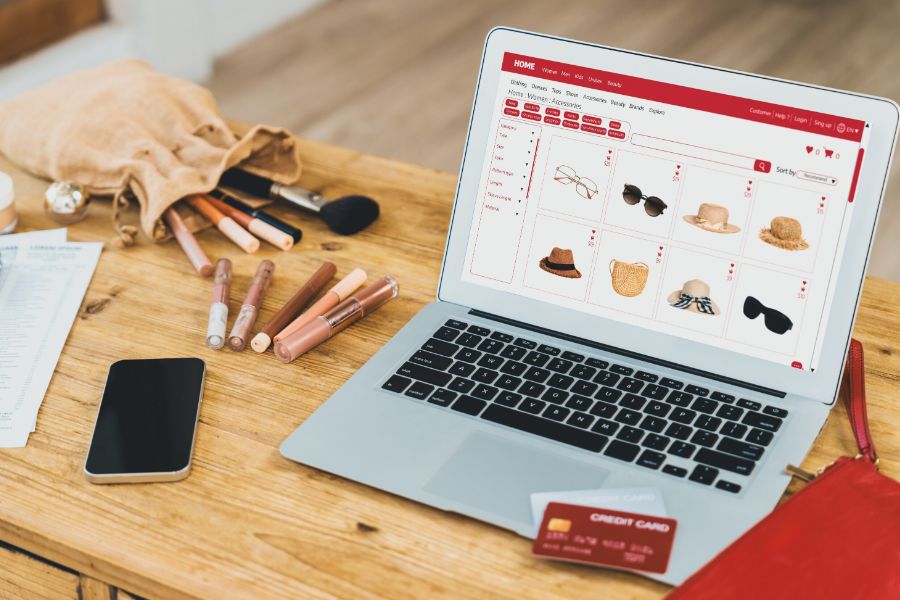You might look at ‘multichannel’ and ‘omnichannel’ and assume they mean the same things. They both use multiple channels to communicate with customers. Nevertheless, they have differences that give them diverse functions. This article aims to differentiate between the two strategies and pick out which is the best for your brand.
It is not uncommon to see ‘multichannel’ and ‘omnichannel’ being used interchangeably since they sound similar. To understand the differences, first, let’s define what they are.
What is multichannel?
Multichannel is when a brand uses two (or more) channels to interact with potential customers. This helps increase consumer engagement and conversion rate.
However, using this type of marketing could have some problems:
- The inconsistent style between channels: different font, background, tone of voice between channels of a brand
- Miscommunication between channels: Employees from different channels aren’t connected
- Angry customers since they have to use different channels: Customer data is only stored on one instead of every channel.
Ultimately, these problems could affect your brand, employees, and customers. So how can you solve them?
What is omnichannel?
Nowadays, businesses are slowly switching to omnichannel – a more efficient solution that makes shopping progress become easier and effortless for customers. Omnichannel is a content strategy using all possible channels and touchpoints. Each and every channel act together to create a unified environment. This strategy is used to improve customer experience and relationships across all touchpoints. Customers could shop on their mobile devices then pay and pick-up their orders at stores.
Multichannel vs. Omnichannel
Even though both strategies use multiple channels to reach customers, which is almost the only thing they have in common, they are actually very different from one another.
Channel vs. Customer
Multichannel aims to spread the brand message across all available channels. The more engagement it can get, the better. With an omnichannel approach, customers are the center that gets all the attention, rather than the number of channels. Omnichannel engages with customers to deliver personalized experiences throughout each and every channel.
Consistency
The second difference between the two is consistency, where omnichannel focuses on customers’ experience, while multichannel focuses on the brand itself.
Multichannel operates each channel separately, which leaves customers with impersonal experience and frustration. And with separated channels, multichannel results in a lack of integration.
Omnichannel will ensure that customers get the same experience through each and every channel. Every omnichannel department is on the same page when it comes to conveying messages to customers.
When your channels are unified and integrated, customers could see that your business is trustworthy. And a brand with a consistent image and message would guarantee loyalty and relationship from customers.
Personalization
Using a multichannel approach, your messages will be spread and customers will be encouraged to complete a call-to-action. The same applied to omnichannel approach, but with an additional effort of ‘constantly getting to know about clients’. Omnichannel gathers data from customers in order to learn more about them so that it could deliver the best experience.
So in a nutshell, multichannel distribute messages across all available channels and omnichannel unifies all channels by merging their information and styles.
To conclude
Omnichannel is clearly the better option, retailers would be able to drive more sales and integrate digital touchpoints. If you are thinking of starting with that strategy (or switching from multichannel), a POS system is a great place to start. An omnichannel POS is the one that synchronizes online and offline inventory of a store – so when a customer places an order online, the inventory of that physical store also changes. ConnectPOS is the perfect choice for you. Moreover, ConnectPOS offers PWA (Progressive Web Apps) – consumer apps that alert retailers about a customer’s purchase history and interest when they enter the store. Therefore, having a POS system is the first step to win at omnichannel marketing. Contact us for your free trial!
ConnectPOS is a all-in-one point of sale solution tailored to meet your eCommerce POS needs, streamline business operations, boost sales, and enhance customer experience in diverse industries. We offer custom POS with features, pricing, and plans to suit your unique business requirements.




